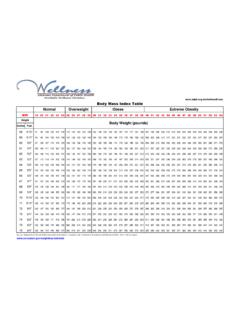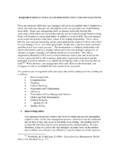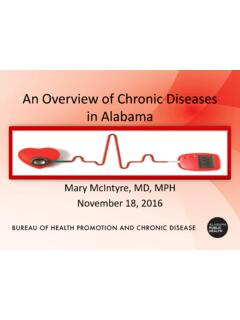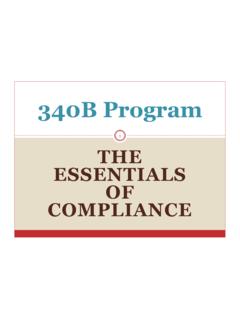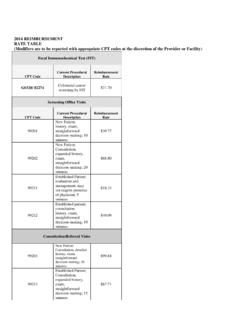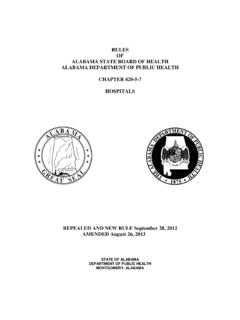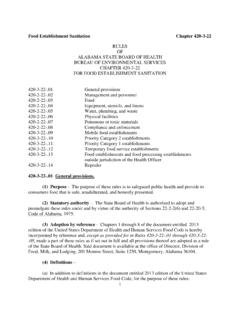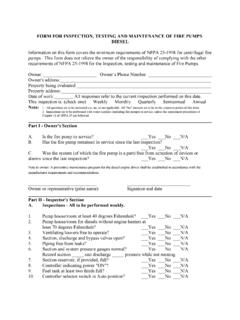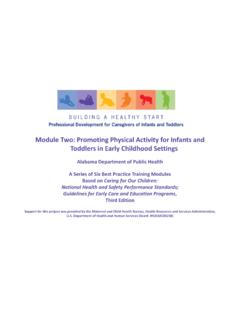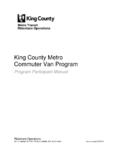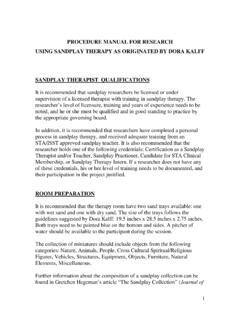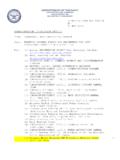Transcription of POLICIES AND PROCEDURES MANUAL CLIA …
1 POLICIES AND PROCEDURES MANUAL . clia # 01d0665512 . Sharon P. Massingale, , HCLD(ABB). Laboratory Director Prepared by: Bureau of Clinical Laboratories Quality Management Division February 2012. ALABAMA. COUNTY HEALTH DEPARTMENT. LABORATORY SYSTEMS. (ACHDLS). Table of Contents Glossary of Laboratory .. 1. Quality Management ..3. Laboratory Personnel in County Health Departments .8. Laboratory Safety ..15. Miscellaneous Equipment ..19. Waived Tests ..25. Brightfield Microscopy ..29. Vaginal Wet Mount 38. Rapid Plasma Reagin (RPR) 18-MM Circle Card Test .52. Darkfield Microscopy ..62. Darkfield Examination for the Detection and Identification of Treponema pallidum ..67. Glossary of Laboratory Terms GLOSSARY OF TERMS. 1. ANALYTE - A substance or constituent for which the laboratory performs testing.
2 2. ACCURACY - State of quality of being accurate; closeness of test results to the true value and implies freedom from error; also referred to as bias. 3. CALIBRATION - Process by which the readings obtained from an instrument or other measuring device in an analytical process are related to known concentrations. 4. CALIBRATOR - A material, solution, or lyophilized preparation designed to be used in calibration. The values or concentrations of the analytes of interest in the calibration material are known within limits ascertained during its preparation and determined by the use of an analytical method of stated reliability. 5. clia - The Clinical Laboratory Improvement Amendments of 1988. 6. CONTROL - Essentially identical specimens of stable materials, usually similar in composition and physical properties to natural specimens, subjected to the same analytical process for surveillance control (monitoring) to estimate the performance characteristics (accuracy, precision) of the analytical process.
3 The control materials are designed to be used in the quality control process and are not used for calibration purposes. The concentration of the analytes of interest in the control material is known within limits ascertained during its preparation and confirmed in use. 7. KIT - All components of a testing system (or unit) that are packaged together. 8. LABORATORY - A facility for the biological, microbiological, serological, chemical, immunohematological, hematological, biophysical, cytological, pathological, or other examination of materials derived from the human body for the purpose of providing information for the diagnosis, prevention, or treatment of any disease or impairment of, or of the assessment of the health of human beings. These examinations also include PROCEDURES to determine, measure, or otherwise describe the presence or absence of various substances or organisms in the body.
4 Facilities only collecting and/or preparing or only serving as a mailing service and not performing testing are not considered laboratories. 9. MEAN - A number that represents an entire set of numbers, determined for the set in any number of ways; average. 10. PERFORMANCE CHARACTERISTIC - A property of a test that is used to describe the quality, , accuracy, precision, analytical sensitivity, analytical specificity, reportable range, reference range, etc. 11. PERFORMANCE SPECIFICATION - A value or range of values for a performance characteristic established or verified by the laboratory that is used to describe the quality of patient results. ACHDLS Glossary of Terms 1 Revised February 2012. 12. PRECISION - State or quality of being precise; freedom from inconsistency or random error; closeness with which repeated determinations agree with each other and implies freedom from variation; also referred to as reproducibility.
5 13. PREVENTIVE MAINTENANCE - A program of scheduled inspections of laboratory instruments and equipment resulting in minor adjustments or repairs for the purpose of delaying or avoiding major repairs and emergency or premature replacements. 14. PROFICIENCY SURVEY - A program in which specimens of quality control material are periodically sent to members of a group of laboratories for analysis and comparison of each laboratory's results with those of other laboratories in the group through some central organization. Participation in a proficiency survey does not replace the day-to-day quality control process of an individual laboratory. 15. QUALITY MANAGEMENT - Sum of all those activities in which the laboratory is engaged to ensure that information generated by the laboratory is correct.
6 Quality management is not restricted to the development and retention of quality control charts but rather includes all aspects of laboratory activities that affect the results produced, from the choices of methods, to the monitoring of instruments, to the education of personnel, to the handling of specimens, and to the reporting of results. The true purpose of quality management activities is to determine how correct, or incorrect, the results emanating from the laboratory are, and to allow those managing the laboratory to determine whether or not the lab is fulfilling its function satisfactorily. 16. QUALITY CONTROL - A procedure performed to measure and maintain quality of performance in the analytical laboratory through measurement of the variability against pre- established criteria specifications, correction as indicated, and documentation.
7 The major purpose of these programs is to establish analytical goals and to assist in their achievement. 17. REPORTABLE RANGE - The range of test values expected for a designated population of individuals. 18. SAMPLE - In proficiency testing, means the material contained in a vial, on a slide, or other unit that contains material to be tested by proficiency testing program participants. When possible, samples are of human origin. 19. STANDARD DEVIATION - The most common measure of statistics, measuring how widely spread the values in a data set are dispersed. 20. TARGET VALUE - For quantitative tests, means either the mean of all participant responses after the removal of outliers (those responses greater than three (3) standard deviations from the mean) or the mean established by definitive or reference methods acceptable for use by the National Reference System for the Clinical Laboratory (NRSCL).
8 By the National Committee for Clinical Laboratory Standards (NCCLS). ACHDLS Glossary of Terms 2 Revised February 2012. Quality Management QUALITY MANAGEMENT. Quality management (QM) is an ongoing process encompassing all facets of the laboratory's technical and nontechnical functions. This includes patient preparation and specimen acquisition (preanalytical), test analysis or examination (analytical), and test result reporting (postanalytical). QM also extends to the laboratory's interactions with and responsibilities to patients, physicians, and the Alabama Department of Public Health. I. General Quality Management POLICIES A. Quality in the entire test system is of foremost importance. B. All laboratory personnel must be trained properly, commensurate with their positions, duties, and responsibilities.
9 C. The Alabama County Health Department Laboratory Systems (ACHDLS) will maintain a quality control system to assure continued precision and accuracy of laboratory results. D. The ACHDLS will participate in the Centers for Medicare & Medicaid Services (CMS). approved proficiency testing (PT) program. II. The Quality Management Program The POLICIES and PROCEDURES of the quality management program will be approved by the laboratory director when first written, with notation of approval by signature and date. The technical consultants will review the POLICIES and PROCEDURES on a regular basis. If a policy or procedure requires a change, a new policy or procedure will be written, approved by the laboratory director, and distributed to testing sites. The old policy or procedure will be retained in a file at the Bureau of Clinical Laboratories, County Assistance Section, for a minimum of two years.
10 III. Components of the ACHDLS Quality Management Program A. Patient Test Management The laboratory director, with the assistance of the technical consultants, will monitor and evaluate laboratory information recorded in the Complete Health Record (the patient chart used in the Alabama county health departments). Chart review will be conducted and documented at least annually with records maintained in the County Assistance Section of the Bureau of Clinical Laboratories. Any errors in documentation will be addressed and brought to the attention of appropriate personnel. B. Procedure Manuals A written procedure MANUAL containing PROCEDURES for all activities of the ACHDLS. will be maintained and readily available at all times to personnel in each testing site. ACDHLS - Quality Management 3 Revised February 2012.

